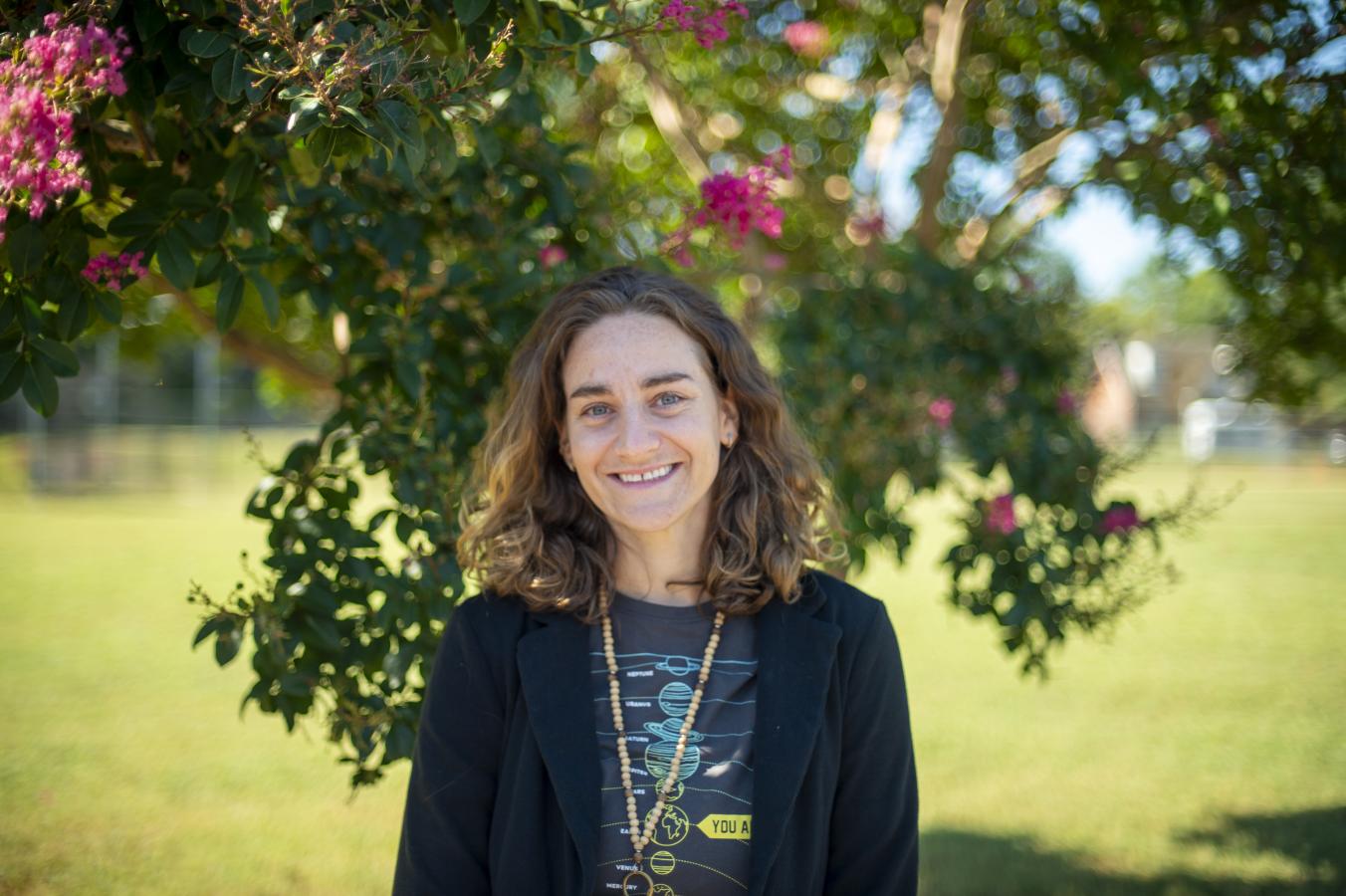Embrace the Chaos: Advice for New Science Teachers
By Jason Strohl
Posted on 2025-11-24

Disclaimer: The views expressed in this blog post are those of the author(s) and do not necessarily reflect the official position of the National Science Teaching Association (NSTA).
Starting your journey as a science teacher can feel overwhelming. Between lesson planning, classroom management, and helping young minds discover the wonders of the natural world, it's easy to feel like you're drowning in expectations. But according to Madeline Grygiel, a science instructional support teacher for the Richmond (Virginia) Public Schools district who works with elementary schools, the key to successful science teaching might surprise you: Embrace the beautiful chaos.
One of the most important pieces of advice Grygiel offers new teachers is counterintuitive: Stop trying to maintain perfect control.
"There tends to be a fear of doing the science and a fear of getting your hands dirty, because I think teachers fear that they're going to lose control," she explains. "But I have found that students are most engaged when they're doing the hands-on work, when things are a little messy and they are a little loud."
The irony? When teachers try to maintain rigid control through board-based instruction and notetaking, that's actually when behavioral problems emerge, says Grygiel. Students thrive when they're actively engaged in discovery, even if it means your classroom gets a little noisy.
Push your comfort zone, she urges. Those phenomena-based activities that make you nervous? They're exactly what your students need to truly connect with science.
Redefine What Science Looks Like
When Grygiel asks her students what a scientist is, their immediate responses are predictable: "goggles, lab coats, explosions," she reports. While these dramatic elements have their place, real science education starts much simpler and closer to home.
"We really want them to see that you can walk outside and look at a blade of grass and you're making observations, you're asking questions, and that's doing science," she notes. "It's noticing the world around you, asking questions. That's the first step."
This shift in perspective is crucial for new teachers, Grygiel contends. Teachers don't need elaborate equipment or dramatic demonstrations to teach meaningful science. Sometimes the most profound learning can happen when students do something as simple as growing a plant in the classroom and observing its changes over time, she observes.
Cultivate curiosity about everyday phenomena, she advises. Science is happening everywhere: Help your students see it.
Connecting Lessons to the Real World
"Students used to be able to just memorize vocabulary, memorize things, and they could perform really well on the science standards of learning exam, and that's not the case anymore," Grygiel explains. "They really have to be able to interpret charts, look at data to draw conclusions."
This shift makes teaching more challenging but ultimately more valuable, she maintains. When students engage in engineering practices and think critically about evidence, they're developing skills they'll use far beyond your classroom.
She suggests that teachers design lessons that require students to think like scientists: observing, questioning, analyzing, and drawing conclusions from evidence.
Some of the most impactful learning happens when students see direct connections between their classroom activities and the broader world. Grygiel describes a collaborative project in which high school students visited her elementary school to conduct temperature readings around campus using thermal imaging drones.
The students discovered that their school's rain garden and reforestation area didn't just keep things cool in hot weather, they also helped regulate temperatures in cold weather. These weren't abstract concepts from a textbook; they were observable phenomena happening in their own backyard, Grygiel points out.
Look for opportunities to connect classroom learning to real-world applications, she recommends. Partner with other schools, invite community experts, or simply step outside your classroom door.
The Benefits of Collaboration
Teaching can feel isolating, especially for elementary teachers, who are the primary adult in their students' academic lives all day. Collaboration with fellow educators isn't just helpful, it's essential for professional growth, Grygiel asserts.
"I think collaboration helps you get out of any routines you might be stuck in," she observes. "Getting exposure to new ideas, even if it's something simple like, ‘Oh, I didn't think about phrasing it that way,’ is hugely important."
Whether it's attending conferences, joining professional organizations like NSTA, or simply talking with colleagues down the hall, connecting with other educators can reinvigorate your teaching and provide fresh perspectives, Grygiel counsels. Actively seek opportunities to collaborate and learn from other educators. Your teaching—and your students—will benefit, she says, adding that NSTA offers many opportunities for teachers to engage with their peers around any and all aspects of science instruction.
Remember Your Why
At the end of the day, what keeps educators like Grygiel excited about their work isn't the curriculum or the test scores: It's the relationships and those magical moments of discovery. "Building relationships with the kids is the biggest thing," she reflects. "Seeing students’ excitement once they get something is the best feeling in the world."
Teaching science to young minds is both a tremendous responsibility and an incredible privilege, says Grygiel, because teachers have the power to shape how an entire generation views the natural world and their place in it. By embracing hands-on learning, fostering curiosity, building real-world connections, and collaborating with fellow educators, you're not just teaching science, you're inspiring the next generation of thinkers, innovators, and problem-solvers, she contends.
Remember that the mess is worth it, the noise means engagement, and every question a student asks is a door opening to discovery. Step through it with confidence, curiosity, and joy, Grygiel concludes.
The mission of NSTA is to transform science education to benefit all through professional learning, partnerships, and advocacy.


